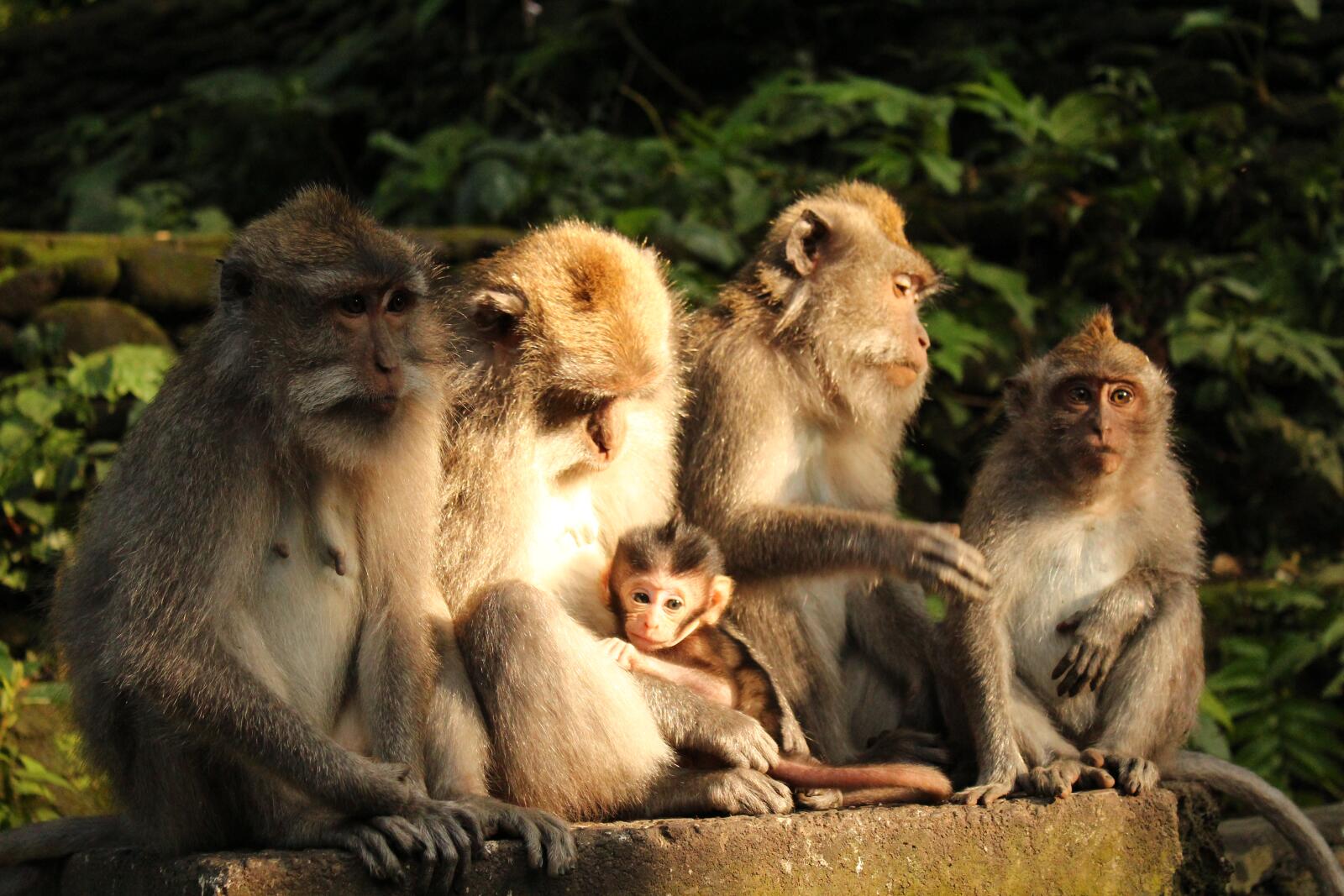Ubud Monkey Forest
Nestled in a dense swath of rainforest within the Padangtegal village, Ubud Monkey Forest is a Hindu temple complex, nature reserve and popular tourist attraction visited by more than 10,000 tourists per month. Officially named the Sacred Monkey Forest Sanctuary, the Balinese call it Mandala Wisata Wanara Wana and consider it an important educational, economic, spiritual and conservation centre. While the temples are part of the attraction for tourists, the real stars of the show are the cheeky, grey-haired, long-tail creatures who inhabit the jungle.
These cheeky monkeys may look doe-eyed and innocent on the brochure, but visitors are warned to keep their wits about them. The monkeys are active during the day, where visitors can see them grooming, fighting and caring for their young. The monkeys are not afraid of humans and will actually approach anyone they think has food. The monkeys can be quite demanding and sometimes become aggressive, however park personnel carry slingshots to quickly intervene in confrontations between visitors and monkeys.

The Ubud Monkey Forest aims to conserve the area while adhering to Tri Hata Karana, three Hindu principles for physical and spiritual wellbeing. According to Hinduism, the three ways to achieve this is to create harmonious relationships between humans, the natural environment and The Supreme God. As such, the Ubud Monkey Forest has adopted the philosophy of creating harmony with nature and visitors from all over the world. The forest conserves rare flora and fauna used in Hindu rituals and acts as a kind of natural laboratory for education and research.
There are also three Hindu temples located in the forest, all estimated to have been built in 1350. The main temple is known as Padangtegal Great Temple of Death or Pura Dalem Agung Padangtegal and is situated in the southwest of the park. The temple worships a god personifying Shiva, the Transformer. Located in the northwest of the park, Beji Temple is a bathing temple with a 'holy spring'. Worshipping the goddess Gangga, the temple is a physical and spiritual place of cleansing and is used for purification before religious ceremonies. Prajapati Temple is situated in the northeast of the park and worships Prajapati. There is also a cemetery next to this temple which is used for the temporary burial of the deceased while awaiting the mass cremation ceremony that is held every five years.
Covering approximately 10 hectares, Ubud Monkey Forest features more than 700 cheeky monkeys and 115 different species of trees and is heavily forested. Running through the grounds is a deep gorge where a rocky stream flows at the base. There are a number of walking trails which allow visitors to access many areas of the park including the stream and gorge. Also located within Ubud Monkey Forest is a conservation area, open stage, public hall and gallery, a composting facility, first aid centre, canteen, toilet facilities and parking.
Open daily from 8.30 am to 6pm, Ubud Monkey Forest costs approximately 50,000 rupiah (AU$5.00) for adults and 40,000 rupiah (AU$4.00) for children.
